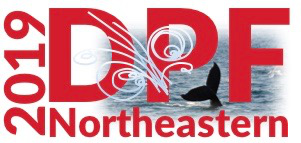Speaker
Description
Sterile neutrinos, hypothetical particles that do not interact through the weak force, have been proposed as an explanation for anomalies seen in short baseline neutrino oscillation experiments. Global data fits have constrained the allowed parameter space for sterile neutrinos but a definitive experiment is still needed. IsoDAR (Isotope Decay-At-Rest) will be able to cover the allowed regions for sterile neutrinos at 5σ in 5 years of running. The novelty of IsoDAR is the construction of a pure anti-neutrino source near a kiloton scale detector. IsoDAR will produce an isotropic beam of $\bar{ν}_e$ through protons impinging on a $^9$Be target to produce neutrons. The neutrons are captured by a surrounding sleeve of isotopically purified $^7$Li, yielding $^8$Li. $^8$Li quickly $\beta$-decays at rest, supplying the $\bar{\nu}_e$. In order to reach the desired statistics, IsoDAR requires 10 mA of 60 MeV protons on target. The high proton current will come from a compact cyclotron accelerating H$_2^+$ ions. The ions will be injected via RFQ from a multi-cusp source, currently being commissioned at MIT. The target, sleeve, and shielding are being designed to handle the high-power beam and large neutron flux. IsoDAR is also able to collect the largest data sample to date of e-$\bar{ν}_e$ elastic-scattering events, allowing for precision measurement of axial and vector weak couplings with sensitivity to non-standard interactions. In addition to the initial IsoDAR experiment, these cyclotrons have other uses; two examples are looking for cp-violation in the DAEδALUS experiment and opening new possibilities in medical isotope production.
